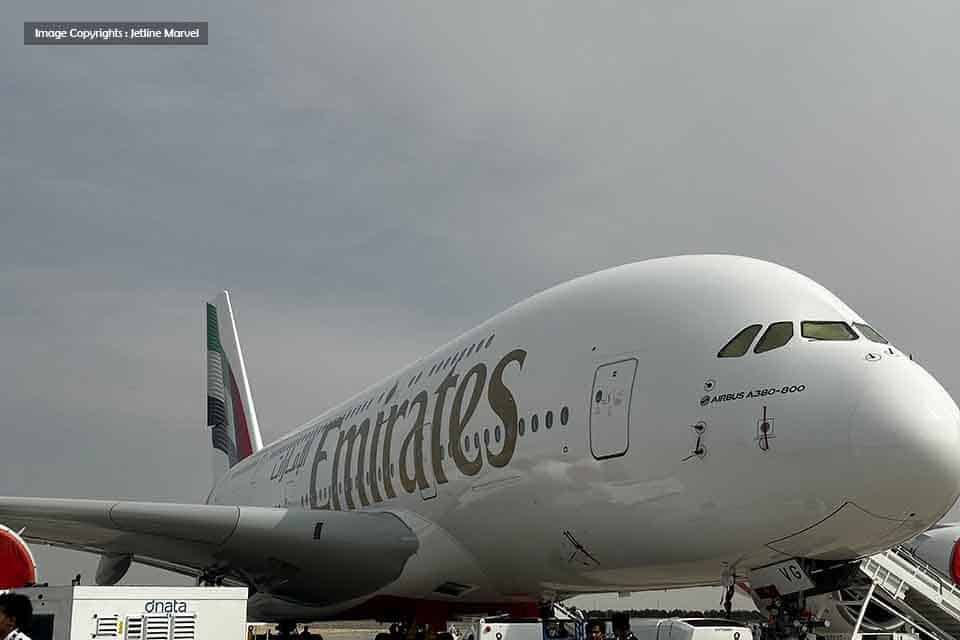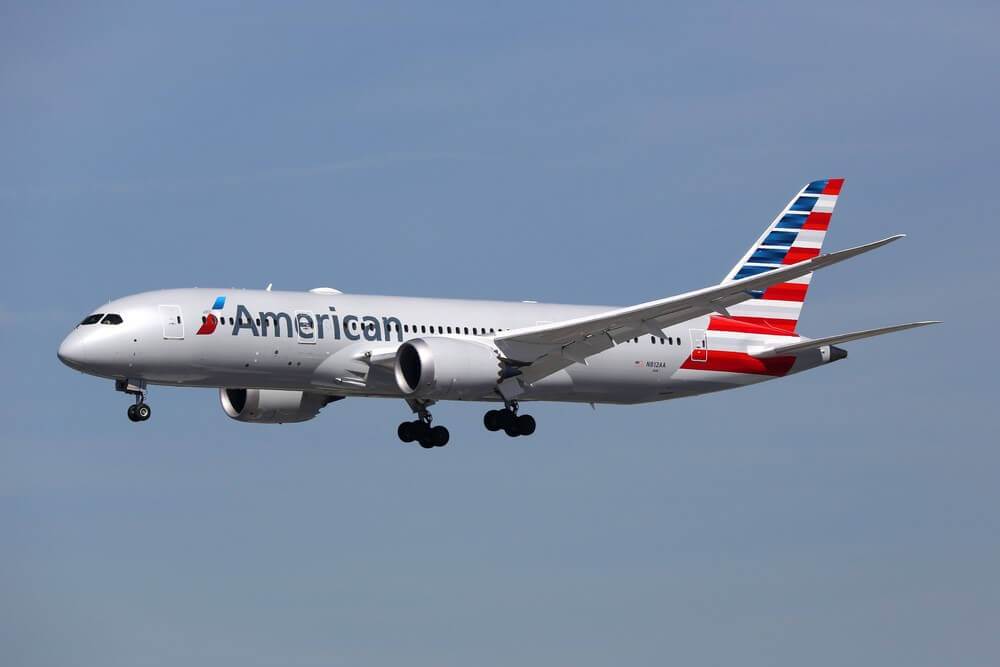Aviation
Why Emirates A380 kept flying after receiving a loud noise alert.

According to the source At 10.45 p.m. on Saturday, the Emirates A380 departed from Dubai and touched down at Brisbane International Airport. After takeoff, according to passengers, they heard an Loud noise but had no idea what was going on during the lengthy journey. after landing all surpise with the big hole in the aircraft left side landing gear area.
However, other sources support the Emirates crew’s decision. Let’s look at the specifics. There have been numerous rumours about the safety of the aircraft flying 14 hours after the crew was informed of the noise and malfunctioning landing gear.
Why Emirates kept flying after receiving a loud noise alert.
The enormous Emirates A380 is driven by four engines and has a more passenger capacity Typically, a 14-hour trip requires a significant amount of gasoline, or about 1,80,000 kg (maximum fuel capacity: 253,983 kg). As soon as the Emirates crew heard the noise, they immediately realized it was a tyre explosion. However, after reviewing the system, everything appeared to be in order because this area is unpressurized, and they may have even called the ATC to tell them of the circumstances. further It is preferable to keep going and be 180 tonnes lighter than to turn around and land in Dubai at 80 tonnes over the maximum landing weight if there are no other warning signs than a tyre with low pressure. The crew will have spoken about this with the airline safety department and decided in accordance with it.
Is continuing the flight the best course of action?
According to the source comments Everyone concerned with safety has to understand that the crew made the perfect choice. Turning around and landing at DBX would have been far riskier than continuing and consuming fuel that would have otherwise been discharged, harming the environment. At normal landing weights, the loss of one tyre is not a problem for the A380, but if they had turned around at the greater landing weight, the risk would have increased noticeably.
Emirates Airbus A380 (A6-EVK) departed rwy 30L at Dubai (OMDB), VAE on flight #EK430 to Brisbane, Qld, Australia where it landed safely. After landing, a large hole was seen in the left fuselage, allegedly coming from a detached bolt in the nosegear.https://t.co/o1EqBuJ0bA pic.twitter.com/s4p6tIpXDw
— JACDEC (@JacdecNew) July 2, 2022
The reason behind the loud blast.
Some reports state that shortly after the Emirates A380 took off from Dubai, a left side rear loose bolt blew a huge hole in the side of the aircraft. This resulted in the tyre blast. Additionally, the pilot kept going to their destination despite hearing an explosion. All of the systems appear to be functioning normally. However, they informed Brisbane ATC of the malfunctioning landing gear as they approached, landed safely, and arrived on schedule.
The plane will stay in Brisbane for inspection and maintenance. The wellbeing of our workers and passengers has always come first. Additionally, the investigation must determine the fault’s root causes.
#Emirates, Airbus #A380 (A6-EVK) flight #EK430 has landed in #Brisbane with a hole in the side of aircraft after a wheel exploded during its take off from #Dubai, crew told to ATC during its approach to Brisbane.
? Avherald#Airbus #Australia #UAE #aviation #AvGeek #avgeeks pic.twitter.com/WjmKmde8wi
— FlightMode (@FlightModeblog) July 3, 2022
The crew at Emirates A380 handled the matter perfectly?
Some sources comments claim that the Airbus A380 has a highly developed system that must have detected the error but did not result in a safety concern issue because the crew must be highly experienced and have made the proper decisions. The A380 has numerous wheels, so the blowing up of a single tyre may not significantly impair the aircraft landing time. The pilot has spoken with the ground and made the appropriate decisions. They have also been notified of the arriving destinations with the problem. nevertheless maintained the correct judgments. They landed safely and had a great flight with perfect teamwork. They must be well-experienced pilots with the ability to make informed decisions in order to continue the flight 14 hours after the alert.
still reports reflect every detail of the investigation. However, it would appear that whether we’re talking about pilots or aircraft, both are the ideal of safety.

Aviation
Airbus is set to increase the production rate for the A350 as demand surges

Airbus SE is set to boost production of its advanced A350 widebody jet as it capitalizes on rising demand for long-distance travel and wide-body aircraft, amidst the ongoing crisis affecting its competitor Boeing due to issues with the B737 Max.
The surge in orders for Airbus’s A350 aircraft has instilled confidence in the company, prompting them to ramp up production rates. This move is particularly advantageous as Boeing continues to grapple with production quality issues surrounding its 787 and 777x aircraft.
In 2024 alone, Airbus has received 137 orders for the A350, signaling a need to expand manufacturing capabilities to meet customer demands. With 1,277 orders received and 592 aircraft delivered as of April 2024, Airbus is poised to fulfill pending deliveries efficiently.
The European aircraft manufacturer announced plans to increase production of A350 jets to 12 per month by 2028, surpassing earlier projections aiming for 10 per month by 2026. This decision was disclosed alongside the company’s first-quarter figures.
The Asian market is proving lucrative for the A350, with significant orders from airlines like Indigo and Air India, totaling nearly 70 aircraft commitments for the future. Meanwhile, Airbus is progressing with its A220 and A320 programs, aiming for a monthly production rate of 14 and 75 aircraft, respectively, by 2026. Additionally, the long-range A321XLR is anticipated to commence service in the third quarter of the current year.
In contrast, Boeing has been compelled to scale back production due to regulatory pressures aimed at enhancing factory processes. While Airbus anticipates a positive market outlook, Boeing continues to face challenges with FAA certification and quality approvals, resulting in ongoing delays for its 737 Max and 777x models.
Financially, Boeing reported a significant cash burn of $3.9 billion in the first quarter, leaving it with $7.5 billion in cash and short-term securities by the quarter’s end, down from $16 billion at the beginning of the year. Consequently, Boeing’s stock has plummeted by 38% in the year so far, contrasting with Airbus’s 14% gain, marking Boeing’s lowest performance in over a year.
For a full listing including details on customers and regions, as well as historical data for the previous year, go to the download section below.
- March 2024 deliveries: 63 deliveries to 32 customers
- March 2024 gross orders: 137
- 2024 deliveries to date: 142 deliveries to 45 customers
| Single-Aisle | A300/A310 | A330 | A340 | A350 | A380 | TOTAL | |
|---|---|---|---|---|---|---|---|
| Total Orders | 19470 | 816 | 1774 | 377 | 1277 | 251 | 23965 |
| Total Deliveries | 11705 | 816 | 1598 | 377 | 592 | 251 | 15339 |
| Aircraft in Operation | 11007 | 271 | 1482 | 202 | 591 | 234 | 13787 |
Aviation
All passengers killed in plane crash, after pilot let his children to control the plane

When boarding a plane, passengers entrust their safety to the skilled hands of the pilot. However, tragedy struck when one of the flight ended in disaster as all passengers lost their lives in a horrific plane crash.
In 1994, during a flight from Moscow to Hong Kong, tragedy struck as an Aeroflot relief pilot made a fateful decision. In a move that would have devastating consequences, the pilot invited his own children into the cockpit to play with the controls. Little did anyone know, this seemingly innocent gesture would lead to the loss of all 75 lives aboard the aircraft.
It was a seemingly innocent act that led to catastrophic results. The relief pilot, Mr. Kudrinsky, invited his two children, Yana, 12, and Eldar, 15, into the cockpit during the late hours of the night. Little did anyone know, this simple gesture would set off a chain of events that would end in tragedy.
Once in the cockpit, the children were allowed to sit in the captain’s chair and play with the controls, unaware that they should have been disabled as the plane was in autopilot mode.
Eldar, perhaps in a moment of curiosity or innocence, held the control column down for a mere 30 seconds. Yet, in those brief moments, the autopilot disengaged, thrusting the aircraft into manual control.
By the time the pilots regained their seats and attempted to regain control, it was too late. Despite their efforts to pull the plane out of a dive, they overcorrected, causing the flight to climb almost vertically, ultimately stalling it.
Final moment Flight 593 crash
In the final moments, as the pilots struggled to stabilize the aircraft, Flight 593 crashed into the Kuznetsk Alatau Mountain range in southern Russia, completely obliterating the plane and claiming the lives of everyone on board.
Investigations revealed a chilling truth: there was no evidence of technical failure. Instead, the crash was attributed to the unthinkable decision to allow inexperienced hands to manipulate the controls of a commercial aircraft.
The black box recording captured the harrowing sequence of events, providing a grim reminder of the human cost of a lapse in judgment. In just over two minutes, the lives of all on board were tragically short, leaving behind a legacy of sorrow and unanswered questions.
Aviation
American Airlines Flight Attendant Orders First-Class Traveler to use Economy Restroom

On a recent American Airlines flight from Chicago O’Hare to Phoenix, Pamela Hill-Veal, a retired circuit court judge, found herself at the center of a disturbing incident.
Despite traveling in First Class, she was directed by a flight attendant to use the Economy Class restroom, sparking allegations of racial discrimination. According to Hill-Veal, the ordeal began when she used the dedicated First Class lavatory during the flight. A flight attendant approached her, accusing her of slamming the door and issued a warning.
Despite remaining calm, Hill-Veal faced further confrontation when she attempted to use the First Class restroom again later in the flight. The situation escalated as the flight attendant persisted in berating Hill-Veal, who felt targeted due to her race. She highlighted the disparate treatment, noting that white passengers were not subjected to similar directives.
In a distressing turn, the flight attendant followed Hill-Veal to her seat and allegedly touched her while threatening arrest upon landing. This alarming encounter left Hill-Veal feeling humiliated and traumatized, impacting her ability to rest even after the flight.
American Airlines has responded, expressing a commitment to investigating the matter and addressing discrimination claims seriously. However, the incident underscores ongoing concerns about racial bias in air travel and the need for accountability in ensuring all passengers are treated with dignity and respect.



























